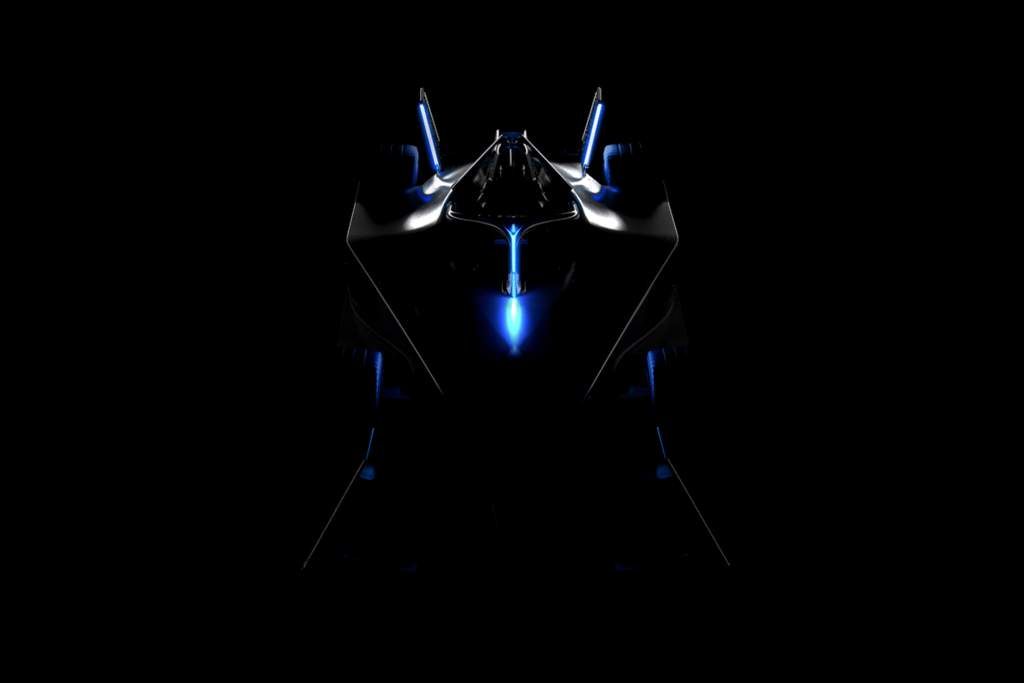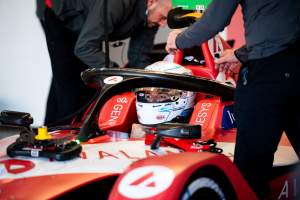Formula E has released teaser images of its new Gen3 car for 2023 and presented it privately to stakeholders, but it’s largely a mystery to the wider world.
Now in his first interview since the initial Gen3 testing phase began, FE development driver Benoit Treluyer has revealed more details about the radical design to The Race.
The car has been running in various guises, initially without and then with its distinctive bodywork, since the end of September.
The Race reported last month that the first serious test of the car, at the Monteblanco circuit in south-western Spain, had taken place with three-times Le Mans 24 Hours winner Treluyer as test driver.
The former Audi factory driver has always been noted for his development skills and was deemed a no-brainer choice for the task after contributing to the Gen2 model – which he also publicly drove for Envision Virgin Racing at the Marrakesh ‘rookie’ test in 2019.
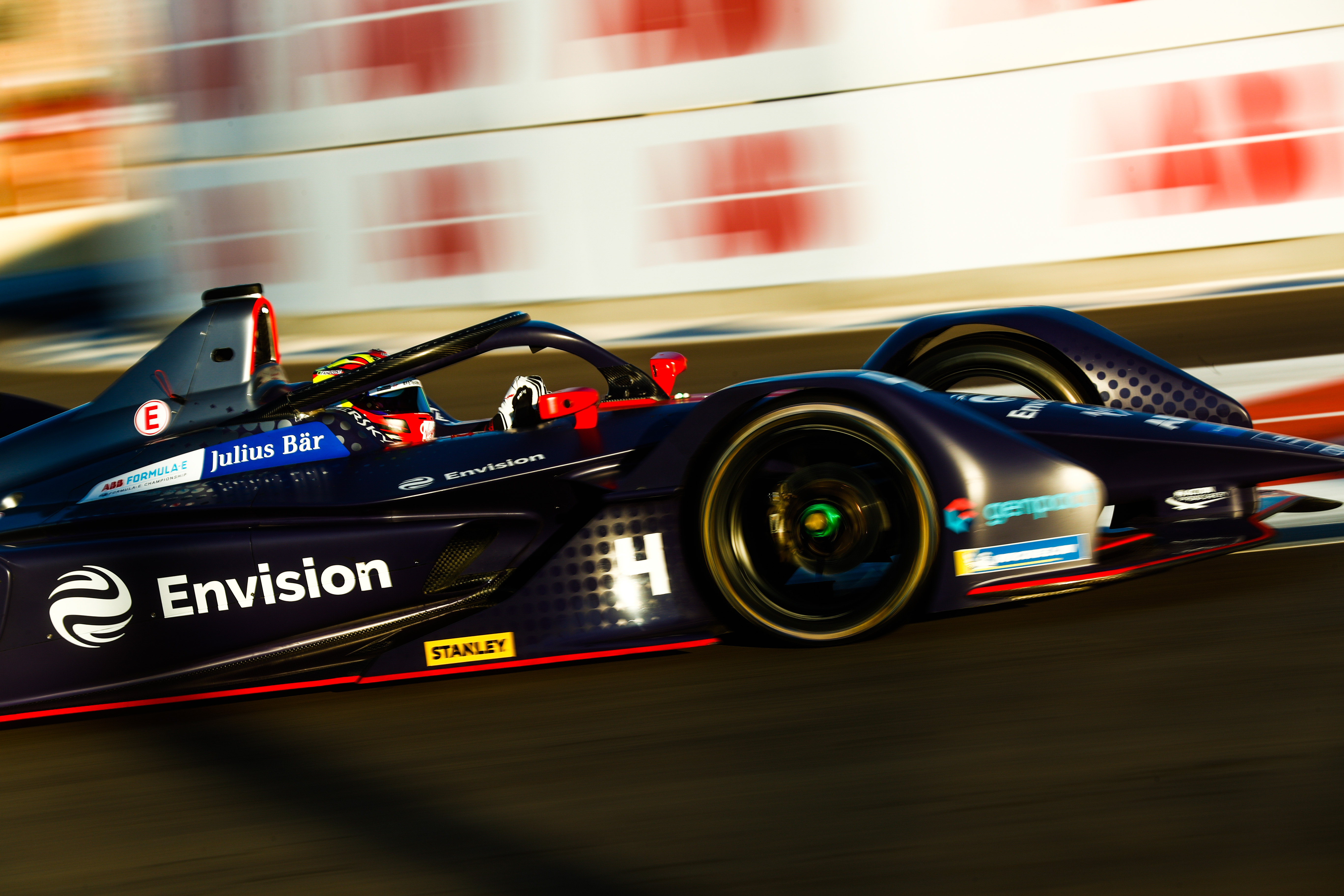
“Honestly, I was really well surprised from the beginning,” Treluyer tells The Race of his comfort in the Gen3.
“First of all, the monocoque is really well done and it’s a really nice car.
“Sometimes I’ve done a seat in the car and I didn’t know how to put my elbows, but this time I could make my seat really well from the first time. A good sign.”
The tests are being organised by Gen3’s official design and assembly provider Spark Racing Technology, together with the FIA’s technical team.
After the car was unveiled to senior team members and championship stakeholders at Valencia late last month, the car returned to Monteblanco for further testing last week. Testing continues – possibly at other venues – in the coming weeks.
Treluyer covered many aspects of the initial testing with The Race. For now, here are the five key areas immediately noticeable to Treluyer on the new generation of Formula E car.
Hankook tyres seem to have hit the ground running

So many unknowns were poured into the Gen3 design with a new-old-new battery supplier in Williams Advanced Engineering and the front-MGU.
But far and away the biggest surprise was the arrival of Hankook, which took a shock tyre tender win over Michelin – the company that had designed and supplied rubber since the inception of the all-electric championship in 2014.
Hankook’s most recent high profile championships have been the DTM and the previous iteration of F3. Some Formula E observers had already cast doubts that the Korean company could immediately model its tyres to the specific demands of Formula E.
Those concerns appear to be, initially at least, unfounded. According to Treluyer, who says that the tyres were “straight in the window”, Hankook has made some strong preliminary progress.
“I was expecting to have difficulties with them at the beginning because I had no clues about the Hankook tyres,” he says.
“I didn’t know how they could handle it for the first time but honestly I was really well surprised, and this was a very good impression.
“Of course, we went step-by-step in development of the car, and we didn’t go straight with full power and full regen.
“But it was really interesting to actually step by step in to see how the car was going better and better and better every time we were setting up.”
There were always bound to be questions about degradation levels of the new rubber, especially with the added power, but Treluyer is again so far satisfied with what he and the testing team have seen.
“The degradation is actually pretty good as well,” he said.
“We can always do better with handling and of course we still try to improve some things, but we are in the plan for this kind of development.”
Hankook will market its sustainability message throughout its four year tenure as tyre supplier in Formula E across 2023 to 2027.
The 2023 tyres’ construction involves 26% sustainable materials via ‘a pioneering process’ of which details have yet to fully emerge.
The extra power is significant
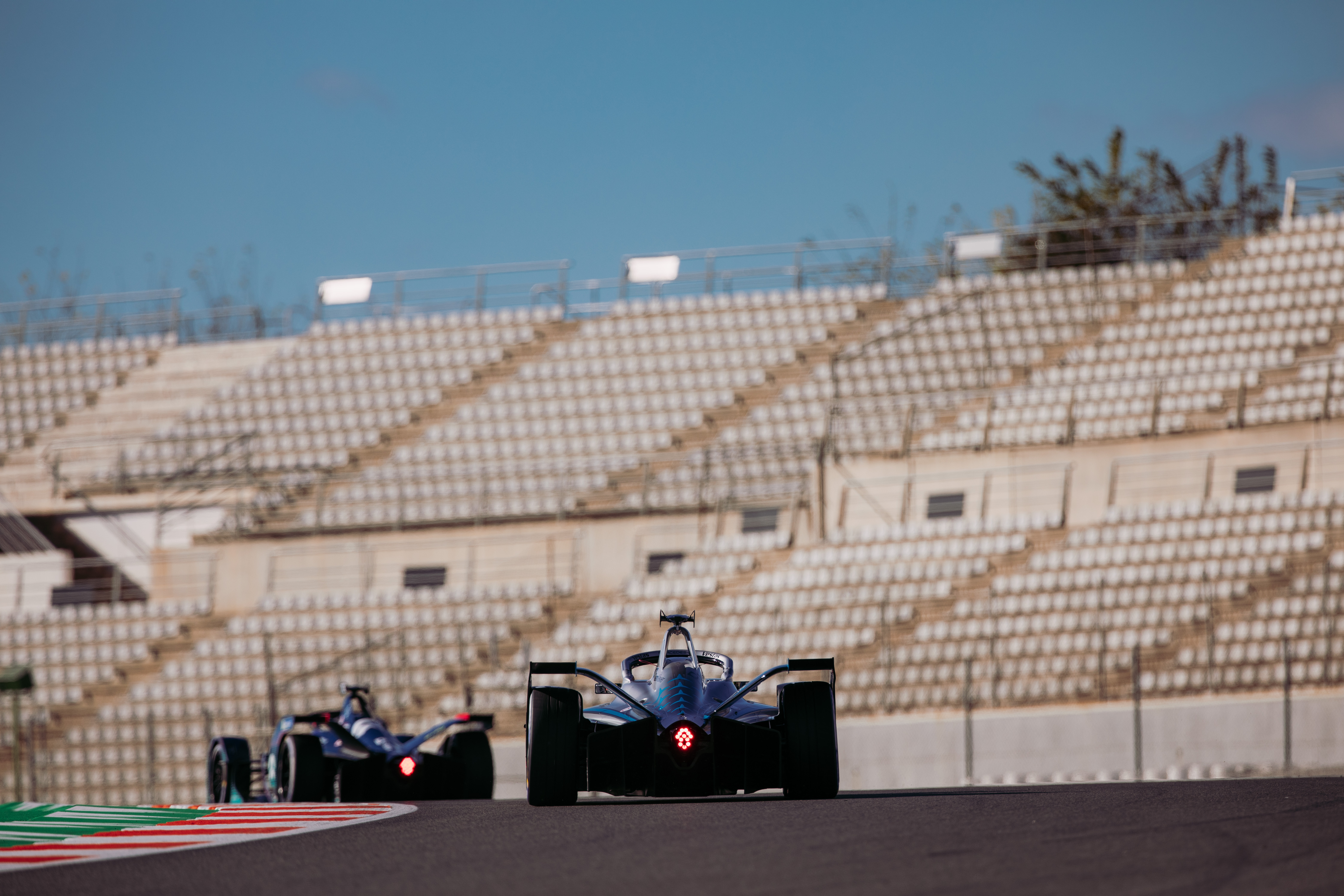
Formula E’s technical road map features a decent, above incremental, power hike for the third generation rules.
With the car believed to be at around the 800kgs mark in weight it will also be much nimbler than the family heritage of the present Gen2 design.
The dual-axle design regeneration capability of 250kW at the front and 350kW at the rear and a total output of power standing at 350kW certainly got Treluyer’s attention early on.
“Now you feel you are really in a single-seater because it’s lighter than in the past, it’s more powerful, it feels like a real single seater and not between a single-seater and a prototype,” he says.
“It’s powerful, light, very agile and I have the same sensation as I would say when I was in Formula Nippon [now Super Formula] or F3.”
With the kW equating to approximately 470bhp the car will probably sit between F3 and F2 pace in all reality.
On tracks such as Rome, Diriyah and the London ExCeL especially, this should be a suitably thrilling spectacle as drivers manage the power delivery, and it will all come with a highly impressive 90% motor-to-energy efficiency.
In top speed terms the cars should be capable of 185/190mph on the long straights such as at Mexico City and potentially the start/finish straight at the track planned for the inaugural Seoul E-Prix.
No rear brakes? No big deal

The Gen3 will also have a regenerative braking capacity of 600kW, meaning that the rear axle will not house hydraulic brakes at all.
Despite being slightly apprehensive about this prior to his first run, Treluyer was effusive in his praise for the braking characteristics of the Gen3 test car.
“It’s actually a really big change in terms of motorsports, without the [rear] brakes and all the things we have to develop in software and things like that, so it’s a big work we have,” he said.
“I was really impressed because the bite really felt like a normal brake and I couldn’t believe it at the beginning.
“The good thing is you can use very well this system to handle the car on the brakes and to set up the car so it’s really interesting.”
Treluyer went on to describe that he felt he could work to a “new window” in terms of handling and also confirmed that “it’s actually better than the normal brake, because it’s very consistent and it’s not like you have to play with the temperatures and set up the cooling, which is really good.
“In the past in Formula E the brakes were a bit of a problem to keep the brake in the right window and now with this system, it’s actually a really good tool to work with.”
Set-up is likely to be more crucial with the Gen3 car than it has been in Formula E so far.
The work he, the FIA and suppliers are achieving so far in testing has meant, according to Treluyer, that “every time we’ve done a small adjustment the car has answered really well and it’s actually very good to drive and to set up.
“To enter into the corner and control the brakes into the corner it’s actually quite easy if you set up the car really well.”
Extra torque will reward smoothness
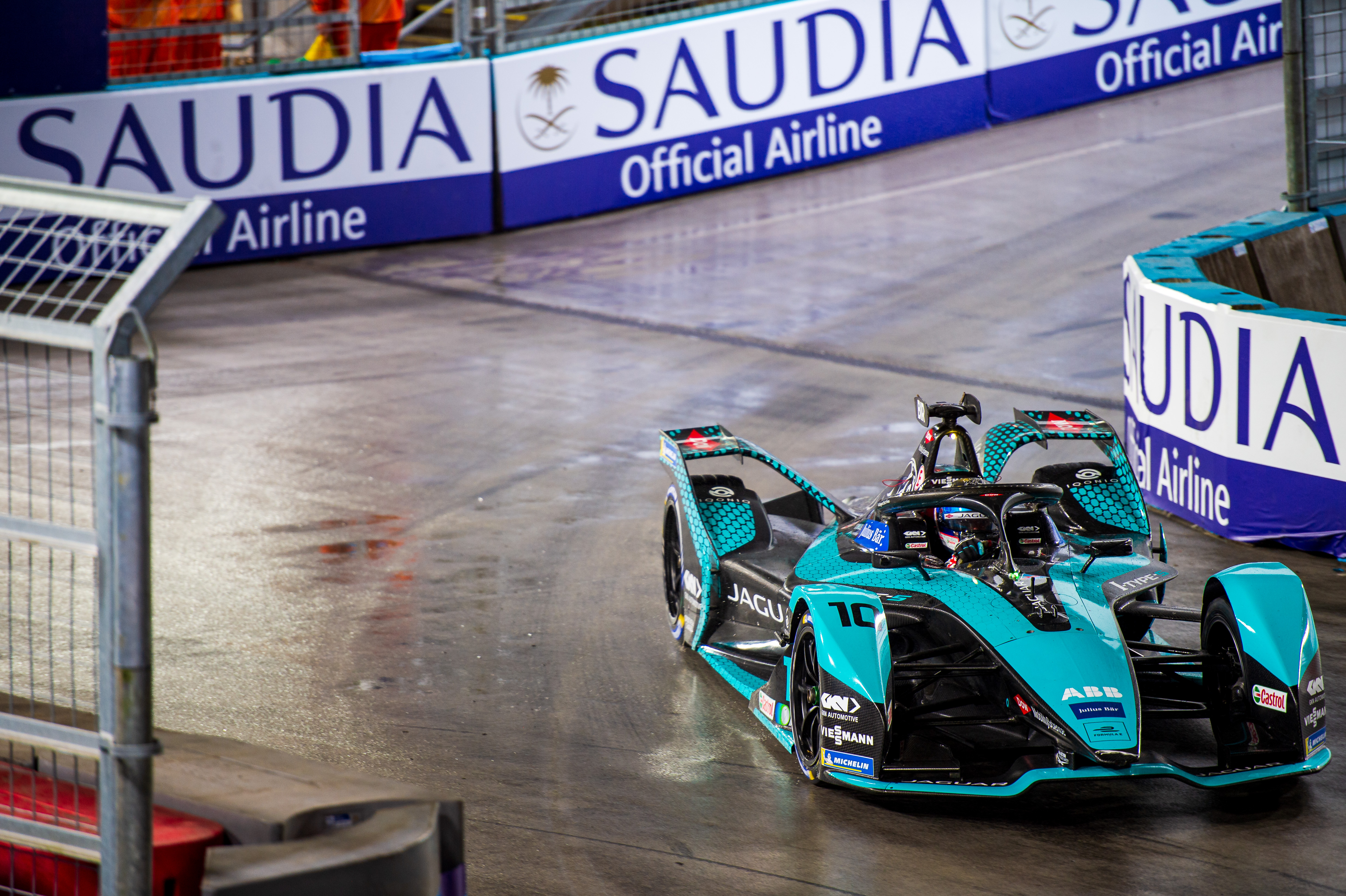
With hairpins and man-made corners throughout Formula E’s unique portfolio of circuits, most of which are on city streets, the application of power is one of the key arts in maximising lap time.
The present second generation of Formula E car’s racing style can be accurately described as ‘passive-aggressive-passive-aggressive’ due to the vehicle dynamic necessities of getting the cars up to optimum windows, particularly in the all-important qualifying period.
Treluyer described the Gen3 feel as “very easy to handle,” alluding to what should be high cornering stiffness and more than just a degree of high grip tendencies.
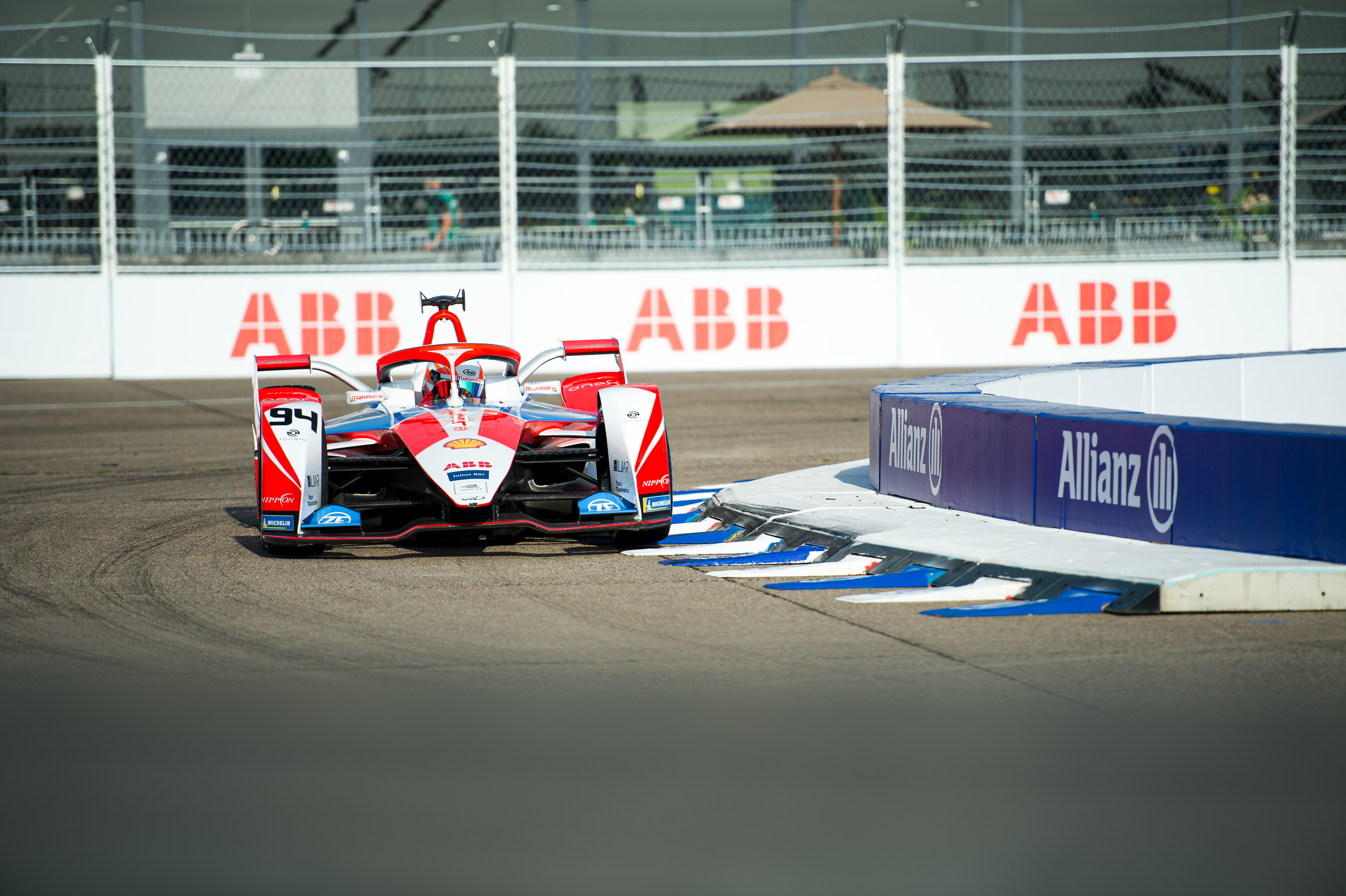
Specifically, the exits of corners are where drivers may need to channel their ‘inner Alex Lynn’. The former Jaguar and Mahindra driver very much had the Alain Prost touch of silk style in Formula E, in patience and feel for applying the extra power.
“The most difficult I would say is more the exit of the corner because you have a lot of torque and power now,” says Treluyer.
“If you are really aggressive and you don’t drive smooth enough, you can be surprised, which was not the case in the past, because the power was lower.
“Now you have a really powerful car, and the traction could be an issue if you want to drive very aggressively.”
A better package for street racing

It became evident in the first few races of the first Gen2 season in 2018-19 that drivers could get away with, and even sometimes benefit from, what has become known in the business of Formula E as ‘tactical contact’.
This ranged from less than subtle nerfs up the rear to the cynical sideswipe into the wall.
It got to the stage at some races, particularly the Rome and Bern races in 2019, of farcical bumper car shenanigans that in retrospect should probably have been dealt with via tough love disqualifications.
The incidents triggered driver warning rules and the embracing of disciplinary points measures as per F1.
The elephant in the room though was the design of the front bodywork section of the Gen2 car, which was considerable and almost LMP-esque.
Naturally it contributed more to overly-aggressive races. The FIA made a mental note.
“In my point of view, it was many aggressive races with many touches, and you should lose more in terms of aerodynamic performance when you push another guy and you break the front wing,” opines Treluyer.
“I like to see aggressive racing but, with respect, sometimes in Formula E I didn’t see some respect between the drivers.”

The Gen3 is open-wheel in a more traditional sense but perhaps more noteworthy is the fact that the front right corner of the car will house an additional MGU.
This will generate electricity to be saved back to the battery, ensuring the front wheels will brake as it achieves this.
To house this, the front of the chassis and the front suspension has been reconfigured to take the unit with driveshafts linking to the front wheels.
Damage this with any notion of ‘tactical contact’ and your race might be over before you can say that phrase.

Treluyer says that “obviously”, he hasn’t had anyone to simulate contact with on the test track, but he has followed directions to test the toughness of the car over kerbs.
“I drove without aerodynamic parts and with the aerodynamic parts and the bodywork has a big effect anyway on the aero and on the balance,” he says.
“The car seems to be really strong because we are not really kind with the car.
“I have to push the limit of the car and be aggressive on the kerbs and the car seems to be really durable.”


